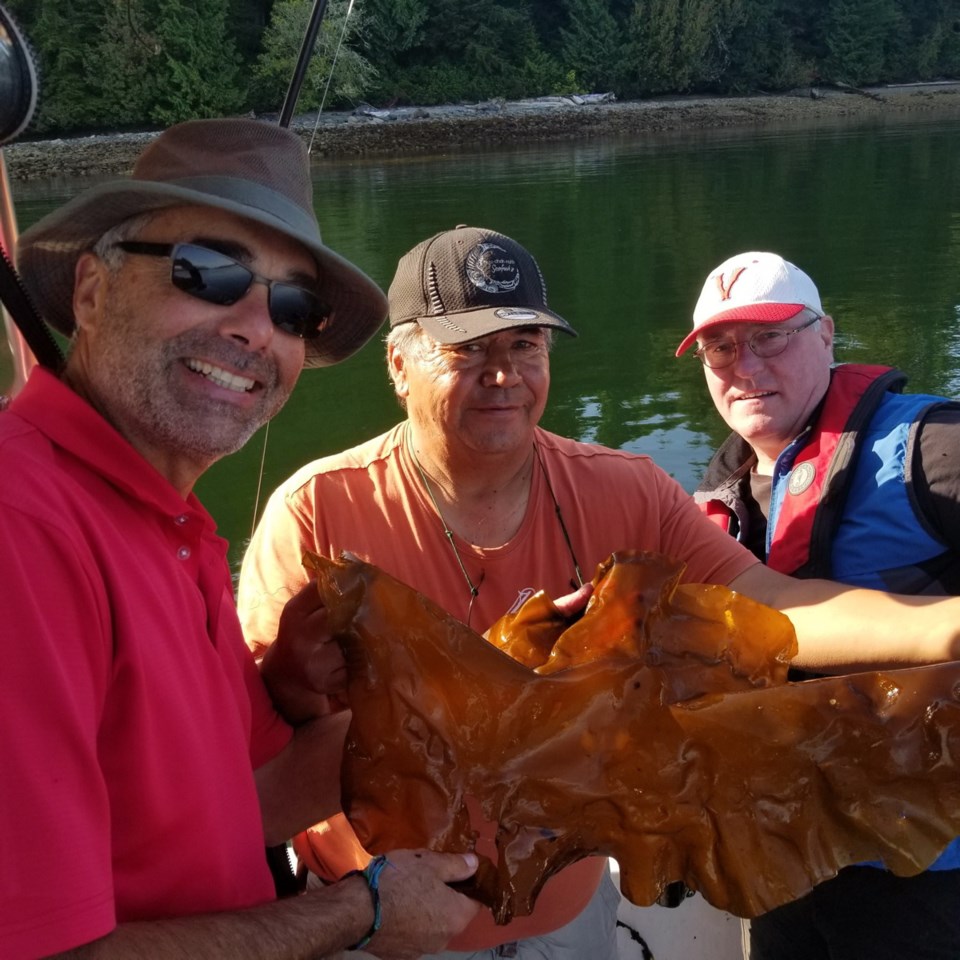An increase in the demand for seaweed around the world has spurred on a new Island business partnership that will establish a kelp farm off the west coast of Vancouver Island.
Cascadia Seaweed Corporation and First Nation-owned Nuu-chah-nulth Seafood have signed on to cultivate seaweed for a global market that is worth an estimated $6 billion US.
“Right now global demand exceeds supply,” said Cascadia president Mike Williamson. “And the market in North America is expanding relatively rapidly.”
Williamson said that’s been driven by the increase of people adding seaweed to their diets, and an increased focus on plant-based proteins and sustainable crops.
The new partnership intends to get a piece of that action.
The group hopes to have licences and approvals in place by mid-November, when they intend to establish two test sites, one off the shores of Tzartus Island and the other off the shores off Seddall Island northwest of Bamfield on Nuu-chah-nulth Seafood tenures.
Williamson said those waters, like much of the sa���ʴ�ý coast, are ideal for kelp farming and supports more than 600 natural species of seaweed.
“sa���ʴ�ý is home to several native species that are in high demand for food, nutritional components and some industrial applications,” he said.
The two test sites — both one hectare in size and resembling a roped grid suspended about three metres below the surface of the water — will be seeded in December by attaching spools of sugar kelp seeds to ropes hanging from the grid.
The intention is to harvest the kelp in May or June.
Williamson said the sites will resemble natural kelp forests and as the business evolves they will only grow native seaweed crops.
“The only physical impacts are some rock anchors placed on the bottom of the ocean and everything else is suspended in the middle of the water column,” he said.
While the first phase of the project will involve only two sites, the company intends to quickly grow to 20 hectares.
Bill Collins, chair of Cascadia’s board, said it’s impossible to put a dollar figure on the start-up costs of the venture because of the immediate plans for expansion.”
“We want to grow this out,” he said, noting their business plan calls for the company to eventually oversee a minimum of 100 hectares under cultivation.
The partnership with Nuu-chah-nulth should help them get to market quickly.
“They are great partners to have. Their members have been on the water for eons and the Nuu-chah-nulth have access to markets and are already in the seafood business,” Collins said. “It’s a natural partnership and it’s expedited Cascadia’s ability to get on the water fast.”
Collins said they are unlikely to be profitable in their first year, but they do expect to have more than 90 tonnes of kelp on the jetty next May.
Nuu-chah-nulth Seafood president Larry Johnson said his group is excited about expanding the seaweed industry in the province.
“Following on from our traditional practices, and adopting what we have learned from other [Nuu-chah-nulth Seafood] brands, we see this as an important contribution to sustainability within our partner [First] Nations,” he said.
The first foray into cultivation will employ three to five people seasonally for seeding and harvesting, though Williamson said they expect this will become full-time yearly work.
The kelp will be processed in Port Alberni.



